Archaeologists uncover ancient ceremonial chariot near Pompeii
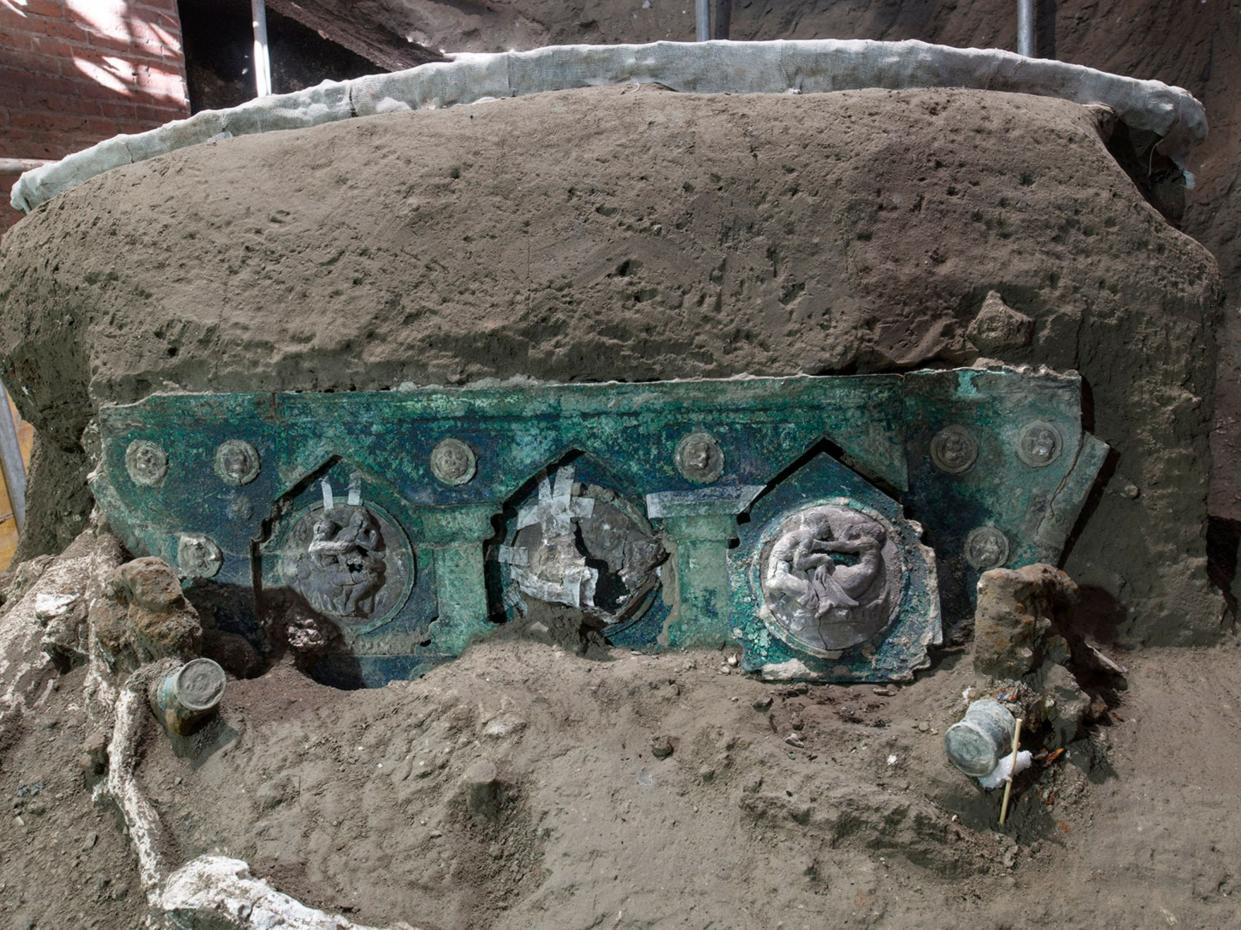
The ceremonial chariot was uncovered in a porch at a Roman villa outside the walls of Pompeii
(POMPEI ARCHAEOLOGICAL PARK/AFP)A ceremonial chariot has been discovered during excavations of a Roman villa just outside the walls of ancient Pompeii.
The four-wheeled vehicle made of wood and iron with decorations in bronze and tin was almost perfectly preserved when the city was buried by the volcanic eruption of Mount Vesuvius in AD79.
It was unearthed in the portico opposite the stable where archaeologists found the remains of three horses, including one still in its harness, in 2018.
Italy's culture ministry described the carriage as "a unique find, without any precedent in Italy".
Massimo Osanna, the outgoing director of the Pompeii archaeological site, said the carriage would have "accompanied festive moments for the community - parades and processions".
"This is an extraordinary discovery that advances our understanding of the ancient world," she added.
Other carriages have been found in Pompeii but they have been functional vehicles used for transport and work rather than ceremonies.
Excavations began at the suburban villa of Civita Giuliana, around 700 metres north of the walls of ancient Pompeii, in 2017.
One aim of the project was to protect the villa from treasure hunters who had dug several tunnels in the area. Two bodies were recovered from the villa at Civita Guiliana in November 2020.
After discovering the chariot, archaeologists seven days a week from mid-January to try to preserve the fragile remains of wood and metal, pouring plaster into voids left by organic matter as it decayed.
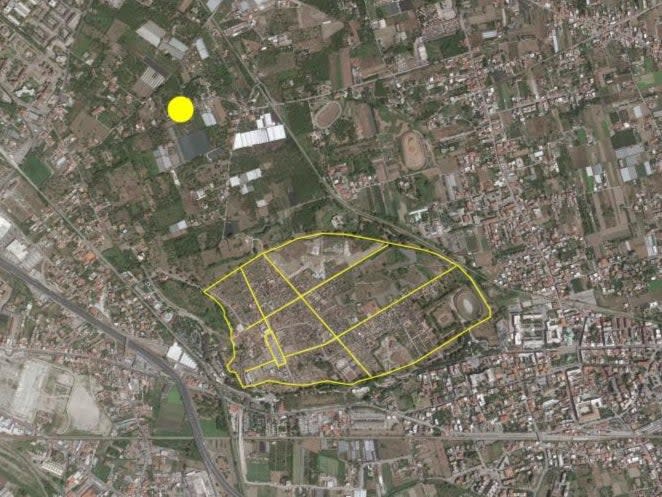
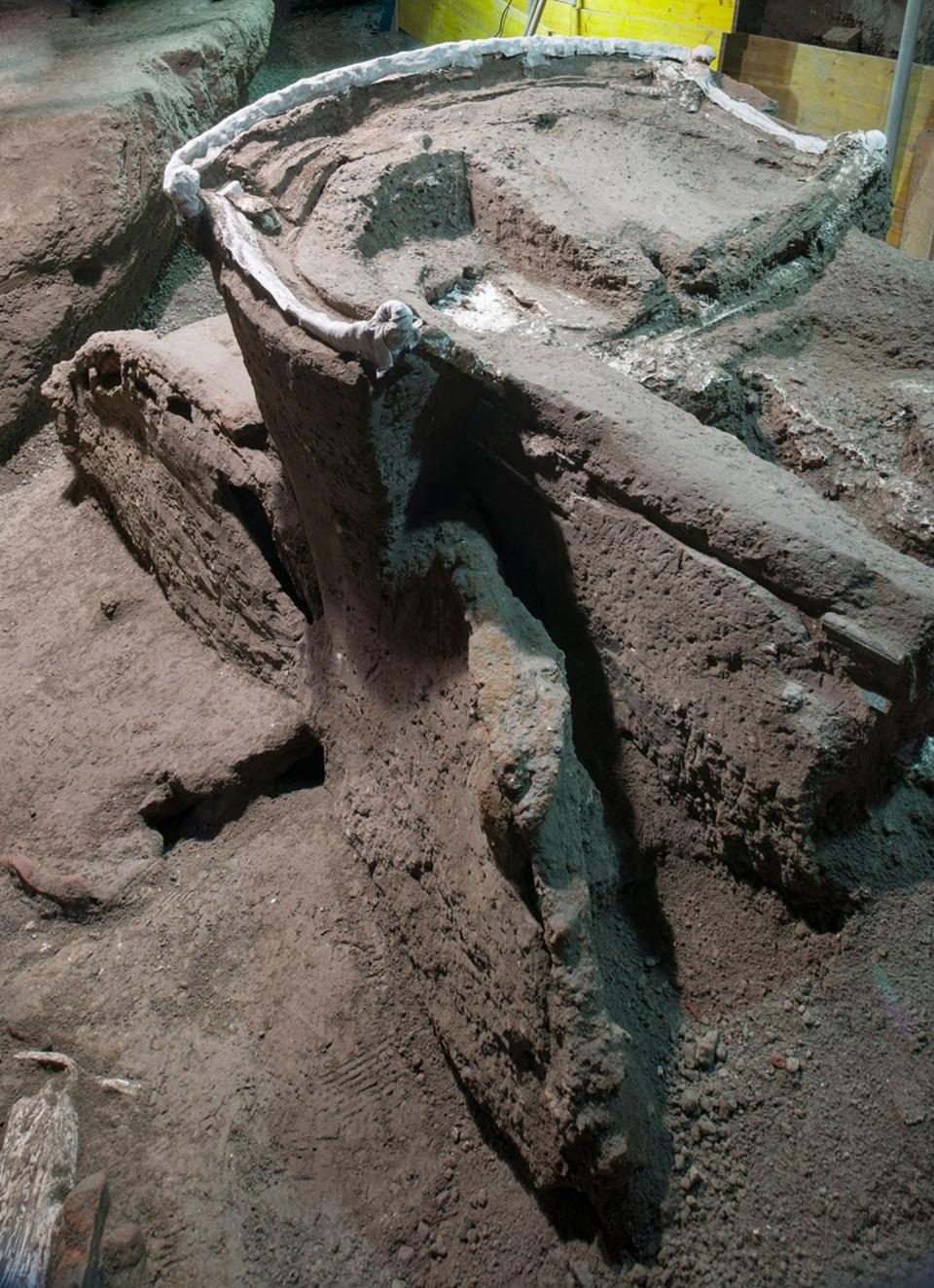
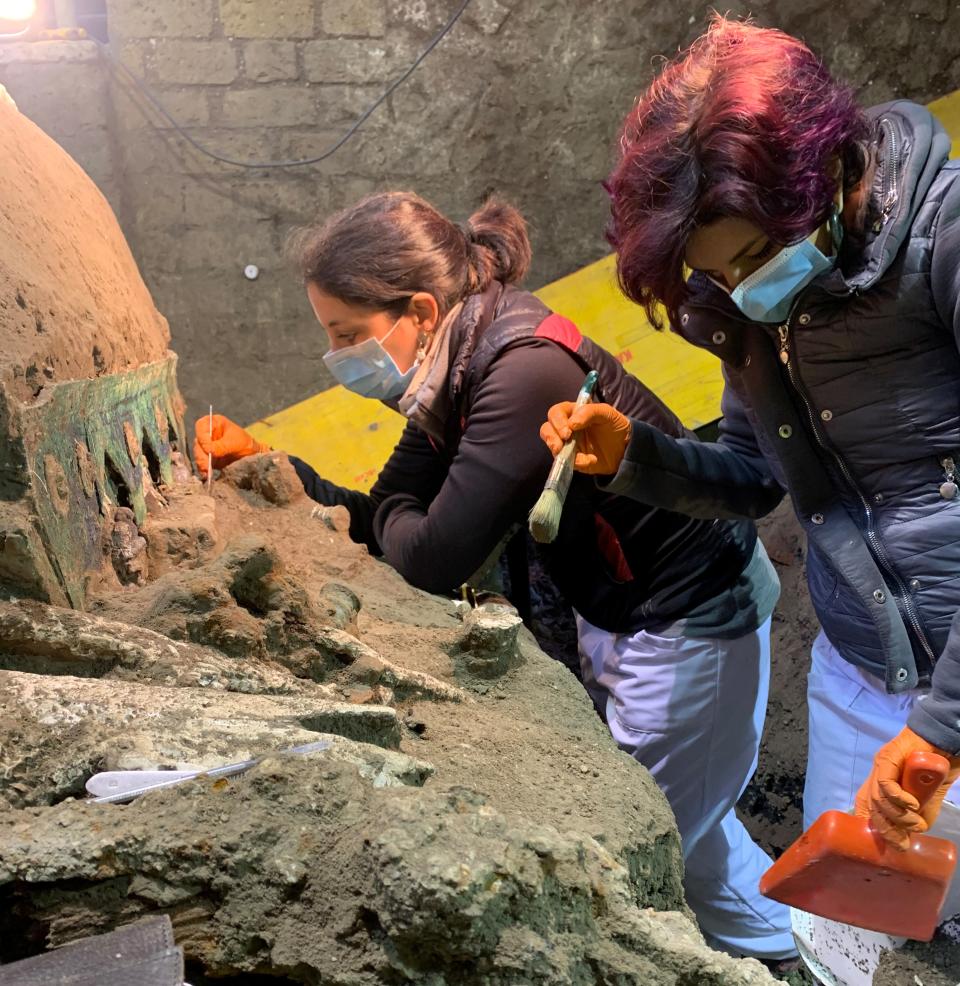
The rear of the carriage is embellished with medallions depicting Cupid, the Roman god of love, and erotic scenes involving male and female figures.
"One cannot exclude the possibility that this could have been a chariot used for rituals relating to marriage, for leading the bride to her new household," said Ms Osanna.
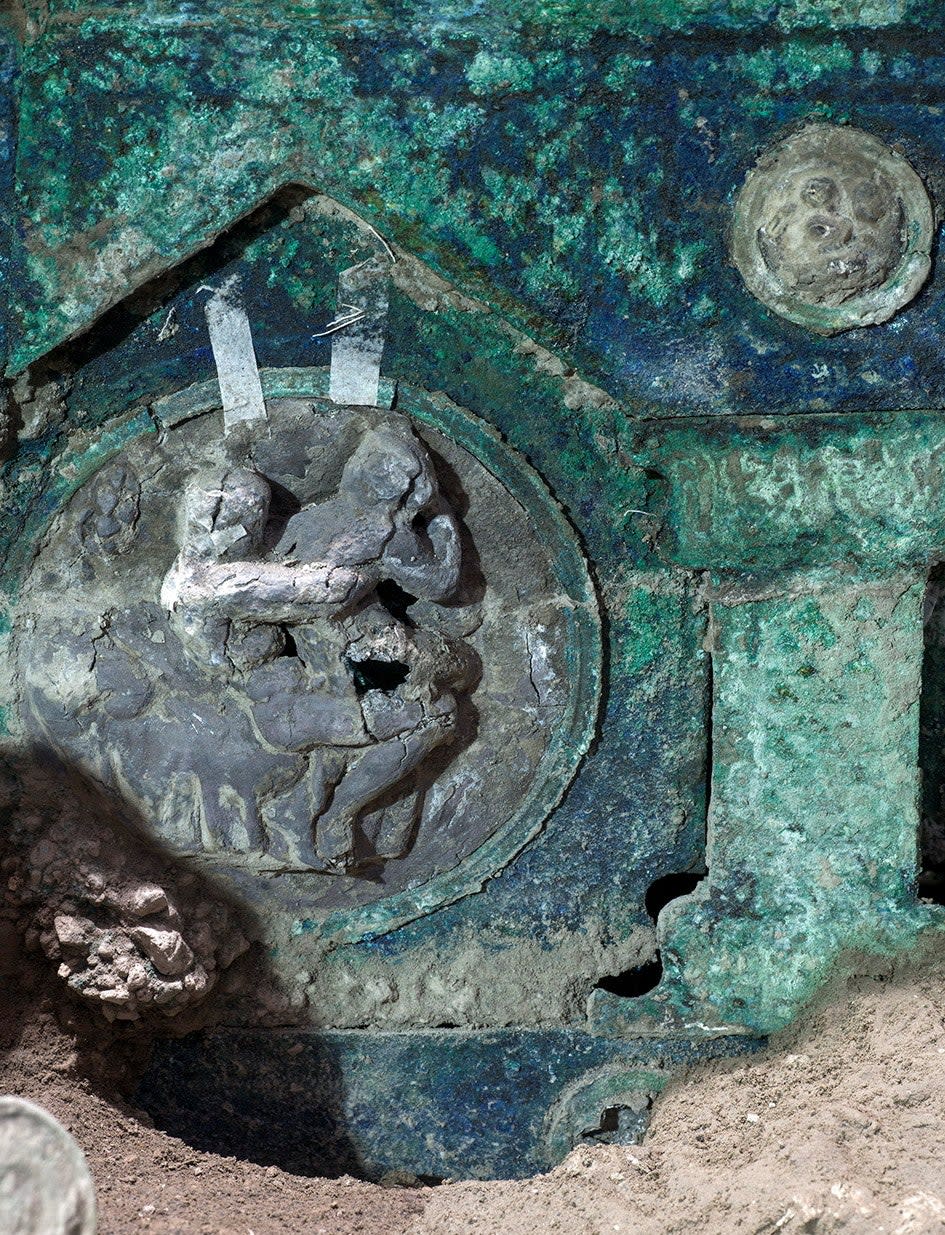
About two-thirds of Pompeii have been uncovered since the ruins were discovered in the 16th century. The city was home to around 13,000 people when it was buried under ash, pumice and dust.
"Pompeii continues to amaze us with its discoveries and it will do so for many years, with 20 hectares still to be dug up," said culture minister Dario Franceschini.
Read More
Pompeii excavation reveals fast food diet of ancient Romans

 Yahoo News
Yahoo News 
